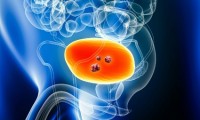-
Chime Biologics Achieves ISO 27001 Certification to Strengthen Information Security in the CDMO Industry
- Source: drugdu
- 282
- March 10, 2024
-
Merck reports drop in net income for fiscal 2023
- Source: drugdu
- 305
- March 9, 2024
-
The roadmap for generative AI in the pharma industry
- Source: drugdu
- 310
- March 9, 2024
-
NHS to ensure people eligible for very high-risk breast screening are referred
- Source: drugdu
- 315
- March 9, 2024
-
US researchers develop algorithm test to identify aggressive ovarian cancers
- Source: drugdu
- 214
- March 9, 2024
-
Simple Blood Test Could Detect Risk of Viral Infection-Induced Cardiac Arrest
- Source: drugdu
- 225
- March 9, 2024
-
Novel Test Identifies Aggressive Ovarian Cancers Early
- Source: drugdu
- 259
- March 9, 2024
-
FDA Approves Opdivo Plus Chemotherapy for Frontline Treatment of Unresectable, Metastatic Urothelial Carcinoma
- Source: drugdu
- 385
- March 9, 2024
-
Novo Nordisk Obesity Pill Flashes the Potential to Beat Wegovy in Weight Loss
- Source: drugdu
- 480
- March 9, 2024
-
Where there is a challenge, there is an opportunity
- Source: drugdu
- 522
- March 9, 2024
your submission has already been received.
OK
Subscribe
Please enter a valid Email address!
Submit
The most relevant industry news & insight will be sent to you every two weeks.

















